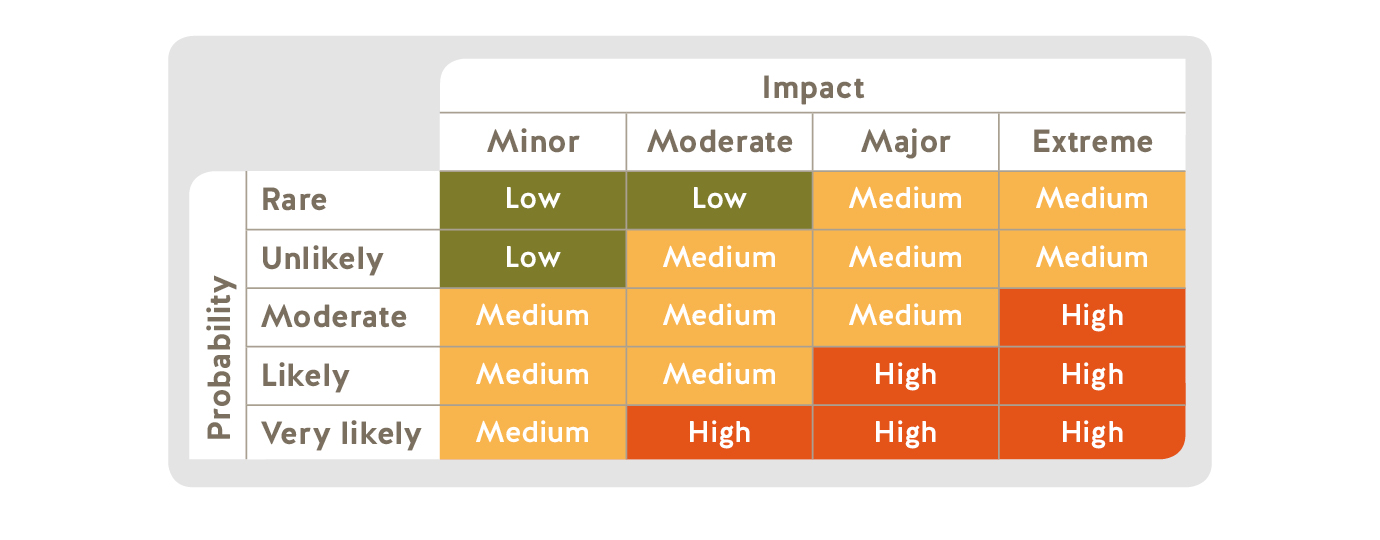Assessing risks
4 min readAs an employer, you need to conduct a systematic risk assessment to help you identify the hazards that exist in your workplace, and how they may put your workers at risk. To determine if you’ve done enough to protect your workers, it helps to use a rating system as part of your risk assessment.

When to do a risk assessment
Risk assessments are a proactive process designed to ensure workers are protected. Specific risk assessment requirements for organizations in B.C. are defined in different parts of the Occupational Health and Safety Regulation. A number of required health and safety processes are forms of risk assessment, such as workplace inspections and investigations. As a best practice, a full-site risk assessment will help you plan for better worker protection.
If your organization is small and you’re confident you understand what’s involved, you can likely do the risk assessment yourself — you don’t need to be a health and safety expert. If your organization is larger, involve the worker health and safety representative or the joint health and safety committee. It’s your responsibility as the employer to make sure the assessment is done properly.
If you have multiple work locations, be sure to do a risk assessment for each workplace. The hazards, and the risks they pose, may be different from place to place.
After you’ve completed your risk assessments, be sure to review them regularly to ensure they are accurate for your specific needs. Risk assessments should be reviewed whenever you introduce new equipment, materials, or work processes. At a minimum, make sure you update your risk assessments annually.
A risk assessment is not about creating huge amounts of paperwork. Instead, it’s about understanding how your workers may be harmed and identifying reasonable measures to control those risks in your workplace. Your risk assessment will help determine whether you’ve covered everything.
Decide who might be harmed and how
For each hazard, you need to be clear about the groups of people who might be harmed. This will help you identify the best way of controlling the risk. Be sure to ask your workers if there are any groups you may have missed.
Here are some things to keep in mind:
- Certain groups of workers may have specific requirements according to the OHS Regulation. These groups may include new and young workers, temporary workers, contractors, and those working alone.
- Make sure you have included notifications and training for people who might not be in the workplace all the time, such as visitors, contractors, or maintenance workers.
- Take members of the public into consideration if they could be hurt by your activities.
- If you share your workplace with another business, consider how your work affects the workers from that business (and vice versa).
Determine the level of risk
Part of the risk assessment is determining the level of risk that hazards pose to workers. Rate the risks as high, medium, or low. This helps you decide which risks are most serious and should be dealt with first.
For example, a busy loading dock where workers are frequently carrying heavy loads could be a high risk for pallet jack collisions and a moderate risk for back strains.
To help evaluate the risk level, try to answer the following questions:
- Who might be harmed? For example, are all workers exposed to the hazard, or is it a smaller number?
- What kind of injury or illness could be suffered, and how severe would it most likely be?
- How long are workers typically exposed to the hazard? The longer the exposure, the higher the risk.
- How frequent is the exposure? If the task is repeated many times each shift, it usually carries more risk than a task done only occasionally.
Use this risk matrix table to help determine level of risk:
Record your findings
Be sure to record the findings of your risk assessment, as these will be the primary tool you will rely on to control the risks in your workplace. This includes noting the hazards, how people might be harmed by them, and what’s already in place to control the risk. This documentation doesn’t need to be complicated, and it can help you communicate and manage risks in your workplace.




